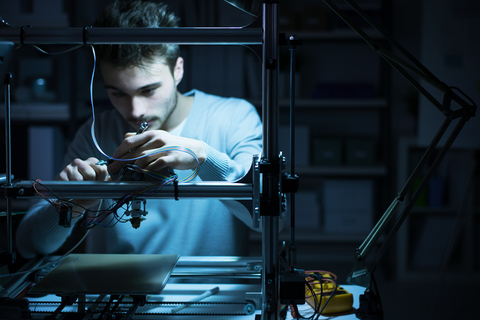World first using 3D printing to reconstruct jaws

A surgical team at Morriston Hospital in Swansea have become world leaders in using 3D printing to reconstruct jaws affected by cancer.
Abertawe Bro Morgannwg University Health Board (ABMU) has reported that the team have pioneered a technique combining traditional bone grafts with 3D printed titanium implants that are anatomically accurate for individual people.
Debbie Hawkins, a store worker from Swansea, was the first person to undergo the procedure. It involved removing and rebuilding a section of her lower jawbone after she developed a tumour, which had grown to the point where there was a risk it would have broken her jaw.
Debbie Hawkins said “When they told me what the procedure involved I was scared at first. I really didn’t know what to expect. But what they have done, and the aftercare I have received, has been absolutely amazing.”
Surgeons traditionally used a length of fibula taken from the leg to replace sections of jaw which had to be removed because of cancer. But to retain the aesthetic shape of the jaw it had to be set too low to allow for dental implants. Alternatively, it could be set high enough to allow implants but the shape of the jawline was then lost. It is common practice for the piece of fibula bone in the jaw to be trimmed during the operation to fit, and held in place with a metal plate that the surgeon had to bend by eye. This is time consuming and requires a great deal of skill.
Now Morriston Hospital is using 3D technology to design the entire procedure from start to finish in advance. Using CT images, the team designs an anatomically accurate titanium implant which both fixes the fibula bone in place and maintains the aesthetic shape of the jawline. The team also creates millimetre perfect cutting guides so the length taken from the fibula exactly matches the excised section of jaw.
Debbie Hawkins’ procedure was carried out by the team of oral and maxillofacial surgeons at Morriston Hospital, Madhav Kittur, Ketan Shah and Simon Hodder. They worked with Maxillofacial Laboratory Services Manager Peter Llewelyn Evans and Biomedical 3D Technician Heather Goodrum.
Llewelyn Evans said “We used the CT image of the patient’s jaw on the other side and mirrored it, and the design of the implant and cutting guides is based on that shape. The titanium implant fits the patient’s jaw perfectly without the surgeon having to do any adjustment. Similarly, using cutting guides means the section of fibula exactly matches the section of jawbone removed.”
To keep the bone alive, the fibula section also includes its own blood supply, which has to be connected to the blood vessels in the neck. Not having to adjust the implant or replacement bone means the surgeon is free to concentrate on this intricate task.
Madhav Kittur said five procedures had already been carried out at Morriston Hospital, with a sixth in the planning stage. He said “It has taken away the uncertainty. We know exactly what is going to happen before we go into theatre as everything is computer planned. This can save a lot of time – up to two hours. On average this operation takes eight to 10 hours, so when we take two hours out of that it is quite a sizable reduction. This is a big advance. It’s better aesthetically, the patient is under anaesthetic for less time, and recovery is better. Although we haven’t yet measured it, I would even say that the length of stay in hospital is also reduced.”
The team has now published technical information on the procedure in the British Journal of Oral and Maxillofacial Surgery.
Debbie Hawkins was in hospital for just two weeks after her operation in August last year. She was able to return to work after three months. While she has not yet had any dental implants, which she hopes to have soon, she is very pleased with the progress she is making. She said “Now and again I do have a few problems with my speech because I’m having to make certain jaw movements. But I’m feeling much better. I get my odd days but otherwise I’m getting stronger all the time.”








